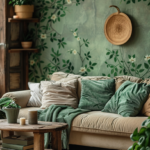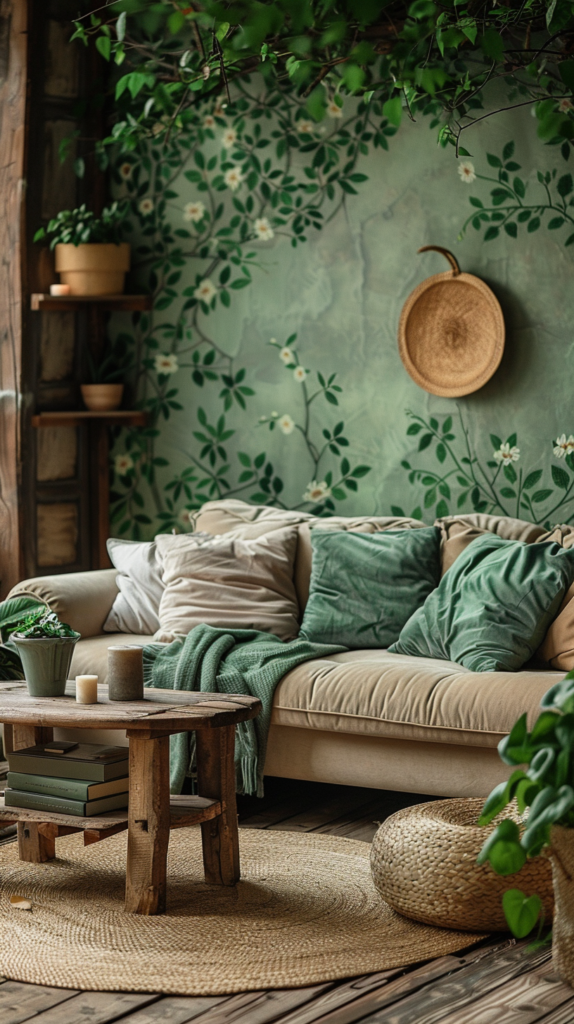Introduction
Creating a minimalist bedroom in a small space offers a unique opportunity to cultivate serenity and simplicity. Minimalism, with its focus on clean lines and decluttered spaces, can transform even the tiniest bedroom into a tranquil retreat. This guide provides practical steps and inspiring ideas to help you achieve a minimalist bedroom that maximizes space and promotes relaxation.

The Essentials of Minimalist Design
1. Embrace Neutral Colors
Choose a Calm Color Palette
Neutral colors such as whites, beiges, and soft grays create a calm and spacious feeling. These colors help to visually expand the room and provide a soothing backdrop for the minimalist design.

Incorporate Subtle Accents
Add subtle accents like soft pastels or muted tones if desired. These accents should be understated to maintain the minimalist aesthetic while adding a touch of warmth.

2. Simplify Furniture Choices
Opt for Sleek, Functional Furniture
Select furniture with clean lines and simple designs. Avoid ornate details or bulky pieces that can clutter the space. A platform bed with built-in storage or a simple bed frame can work perfectly in a minimalist bedroom.

Choose Multi-Functional Pieces
Incorporate multi-functional furniture to maximize space efficiency. For example, a bed with storage drawers or a slim desk that doubles as a vanity can save space and reduce clutter.
3. Focus on Quality over Quantity
Invest in Fewer, Better Pieces
Select high-quality, durable items that serve multiple purposes and enhance the overall design. A few well-chosen pieces will contribute to a clean, uncluttered look.

Prioritize Essential Items
Keep only the essential items in your bedroom to avoid overcrowding. Focus on the core elements like a bed, a nightstand, and a lamp, and avoid unnecessary accessories.
Maximizing Space in a Minimalist Bedroom
1. Utilize Vertical Space
Install Floating Shelves
Install floating shelves above the bed or on empty wall spaces. These shelves can hold books, plants, or decorative items without taking up floor space, helping to keep the room organized.

Use Wall-Mounted Lighting
Opt for wall-mounted lighting fixtures to free up nightstand or floor space. Wall sconces or adjustable reading lights can provide ample illumination while maintaining a minimalist look.
2. Implement Smart Storage Solutions
Incorporate Under-Bed Storage
Utilize the space under your bed for storage. Choose a bed with built-in drawers or use storage bins to keep items neatly tucked away. This approach keeps clutter out of sight and maximizes available space.

Add Built-In Closets or Cabinets
Consider built-in closets or cabinets for a streamlined appearance. Built-in solutions can help to efficiently use wall space and keep the room looking tidy and uncluttered.
Creating a Tranquil Atmosphere
1. Select Simple, Elegant Textiles
Choose Minimalist Bedding
Opt for bedding with simple patterns or solid colors that complement the neutral palette of the room. High-quality linens in soft textures contribute to a serene and comfortable environment.

Use Minimalist Window Treatments
Select window treatments that are functional yet understated. Sheer curtains or simple blinds can provide privacy while maintaining the minimalist aesthetic.
2. Incorporate Natural Elements
Add Plants for a Touch of Nature
Include a few low-maintenance plants to bring a touch of nature into your bedroom. Plants like succulents or snake plants can enhance the minimalist design without overwhelming the space.
Use Natural Materials
Incorporate natural materials such as wooden frames or bamboo accents. Natural elements add warmth and texture to the minimalist bedroom while keeping the design simple.

Personalizing Your Minimalist Bedroom
1. Add Subtle Personal Touches
Include a Statement Piece
Choose one or two statement pieces that reflect your personality, such as a piece of artwork or a decorative item. Ensure that these pieces are understated and do not detract from the overall minimalist design.
Select Personal Accessories Wisely
Add personal accessories sparingly. Opt for items that are functional or that add a subtle touch of style without creating clutter.

2. Maintain a Clutter-Free Environment
Regularly Declutter
Make decluttering a regular habit to maintain the minimalist aesthetic. Regularly assess your belongings and remove items that are no longer needed.
Create a Cleaning Routine
Establish a cleaning routine to keep the bedroom tidy and organized. Regular cleaning ensures that the space remains serene and reflective of the minimalist design.

Conclusion
Creating a minimalist bedroom in a small space is all about embracing simplicity, functionality, and tranquility. By focusing on neutral colors, selecting streamlined furniture, and maximizing space, you can design a serene and stylish bedroom. Incorporate personal touches thoughtfully and maintain a clutter-free environment to enjoy a peaceful retreat that aligns with the principles of minimalist design.

FAQs
How can I choose the right color palette for a minimalist bedroom?
Opt for neutral colors such as whites, beiges, and soft grays to create a calm and spacious feeling. Subtle accents can be used to add warmth without overwhelming the space.
What are the best furniture options for a minimalist bedroom?
Choose furniture with clean lines and simple designs. Opt for multi-functional pieces such as a bed with storage drawers or a slim desk that doubles as a vanity to maximize space efficiency.
How can I maximize space in a small minimalist bedroom?
Utilize vertical space with floating shelves and wall-mounted lighting. Incorporate under-bed storage and consider built-in closets or cabinets for a streamlined appearance.
What are some tips for creating a tranquil atmosphere in a minimalist bedroom?
Select simple, elegant textiles and use natural elements such as low-maintenance plants and natural materials. These additions contribute to a serene and comfortable environment while maintaining a minimalist look.
How do I personalize a minimalist bedroom without adding clutter?
Include one or two statement pieces and select personal accessories wisely. Focus on items that are functional or add a subtle touch of style without creating clutter.







